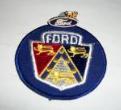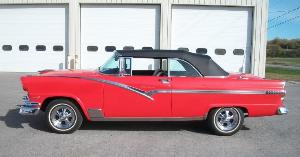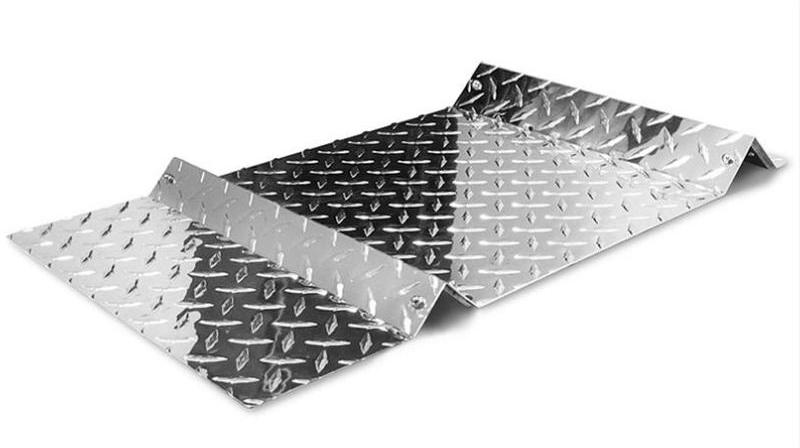|
Author
|
Message
|
|
Meandean
|
|
|
Group: Forum Members
Last Active: 3 Years Ago
Posts: 163,
Visits: 137.7K
|
harleyjohn45 (4/4/2019)
oldcarmark (4/4/2019)
You are probably aware that switching the Neutral Start Switch to One from 1958 Ford will start in both Park and Neutral. I never could figure out what Ford was doing when the Automatics from 1950-1956 only start in Neutral. I learned something today, my car starts in Park and neutral, so I guess someone worked on it in the past. Mine does too. I guess I never even thought about it. Never knew they would originally only start in N. Of course we only ever had standard or OD transmissions growing up. My dad did not trust the reliability or longevity of automatic transmissions. Plus the fuel economy suffered. AND, mostly they could not be push/bump started. And he was cheap, so a new battery was always a last resort.
|
|
|
|
|
oldcarmark
|
|
|
Group: Forum Members
Last Active: Last Year
Posts: 3.7K,
Visits: 32.6K
|
harleyjohn45 (4/4/2019)
oldcarmark (4/4/2019)
You are probably aware that switching the Neutral Start Switch to One from 1958 Ford will start in both Park and Neutral. I never could figure out what Ford was doing when the Automatics from 1950-1956 only start in Neutral. I learned something today, my car starts in Park and neutral, so I guess someone worked on it in the past. As long as it starts ONLY in Park & Neutral. The Switch can be bypassed and it will start in any Gear. On the Standard Transmissions the Wires simply plug together where the Switch for Automatic goes on the lower steering column.
 
|
|
|
|
|
harleyjohn45
|
|
|
Group: Forum Members
Last Active: 3 Years Ago
Posts: 43,
Visits: 7.3K
|
Paul, I've done the same thing many times, since I don't move as fast as I used to, I'll start chocking wheels.
|
|
|
|
|
harleyjohn45
|
|
|
Group: Forum Members
Last Active: 3 Years Ago
Posts: 43,
Visits: 7.3K
|
oldcarmark (4/4/2019)
You are probably aware that switching the Neutral Start Switch to One from 1958 Ford will start in both Park and Neutral. I never could figure out what Ford was doing when the Automatics from 1950-1956 only start in Neutral. I learned something today, my car starts in Park and neutral, so I guess someone worked on it in the past.
|
|
|
|
|
oldcarmark
|
|
|
Group: Forum Members
Last Active: Last Year
Posts: 3.7K,
Visits: 32.6K
|
You are probably aware that switching the Neutral Start Switch to One from 1958 Ford will start in both Park and Neutral. I never could figure out what Ford was doing when the Automatics from 1950-1956 only start in Neutral.
 
|
|
|
|
|
DryLakesRacer
|
|
|
Group: Forum Members
Last Active: Last Year
Posts: 1.7K,
Visits: 340.1K
|
I hope you get back to 100% soon. I have done what you were doing many times with my 56 with an automatic. I never have trusted my "park" detent and do almost everything in neutral and the emergency brake on. I even move the shift arm on the column under hood a lot. I too never trusted E brakes with reverse and have been using a 4x4x12 behind a rear tire since I can remember. Since these Fords didn't start in park anyway I normally leave my car parked in neutral with the E brake on.
56 Vic, B'Ville 200 MPH Club Member, So Cal.
|
|
|
|
|
FORD DEARBORN
|
|
|
Group: Forum Members
Last Active: Yesterday
Posts: 792,
Visits: 113.4K
|
Thanks for being thoughtful enough to share this with everyone and best wishes to you and yours. These cars have a lot of wear on linkages and the detent that should hold the park position. I keep several chunks of rough sawn 5X5 pine in the garage for the purpose. Will be using them more often now. Thanks again for sharing....
64F100 57FAIRLANE500
|
|
|
|
|
Tedster
|
|
|
Group: Forum Members
Last Active: 4 Years Ago
Posts: 513,
Visits: 153.3K
|
Sorry you were injured, though it's "good" insofar it hopefully provides a needed wake up call to the rest of us as things get busier in the Spring season.
Take the time to assess a given situation, be safe out there, keep a fire extinguisher and 1st aid kit handy and let someone know you're in the garage. I usually have a few chunks of stovewood in the bed of the truck at minimum for chock blocks.
It's important to make chocking the wheels at every stop a habit. At least around hills. It makes one think about what can happen if something gies wrong. Thank you for the very real reminder and get soon well!
|
|
|
|
|
charliemccraney
|
|
|
Group: Moderators
Last Active: 7 days ago
Posts: 6.1K,
Visits: 443.0K
|
I made a "chock" out of some plywood and 2x4 which allows the weight of the vehicle to stop the chock from having any chance of moving. It's effectively like this, https://www.summitracing.com/parts/gpc-hps121215/overview/ and can either be driven onto or slid under the tire. I've had a couple chocks that just slid along the floor. That's no good. 
Lawrenceville, GA
|
|
|
|
|
Hoosier Hurricane
|
|
|
Group: Moderators
Last Active: 4 hours ago
Posts: 3.7K,
Visits: 323.2K
|
Paul: Sorry to hear about your accident. I'm wishing a quick recovery for you. Last summer I was helping a friend with his '57, and I had started the engine with my remote starter switch. It dropped into reverse and started to back out. Luckily the weather was warm and the overhead door was open. Like your situation, he would not have had room between the car and the door jamb, so I jerked the coil wire out to avoid any injury or damage. It was a fresh restoration, I would have been sick if it had been damaged.
John - "The Hoosier Hurricane"

|
|
|
|